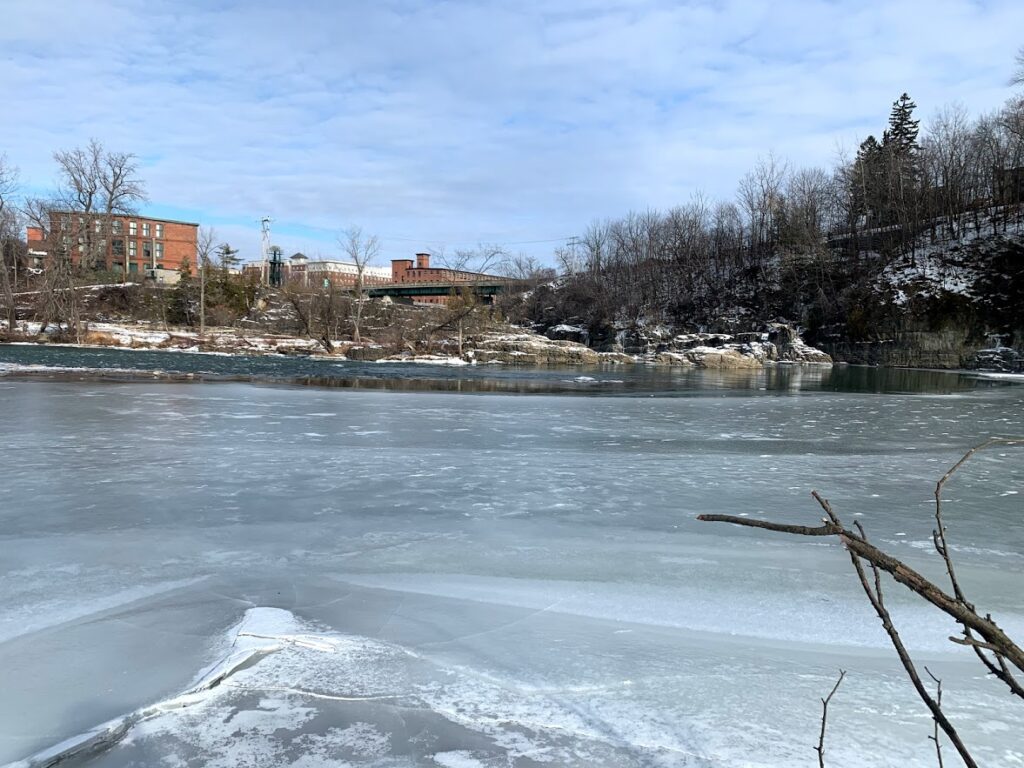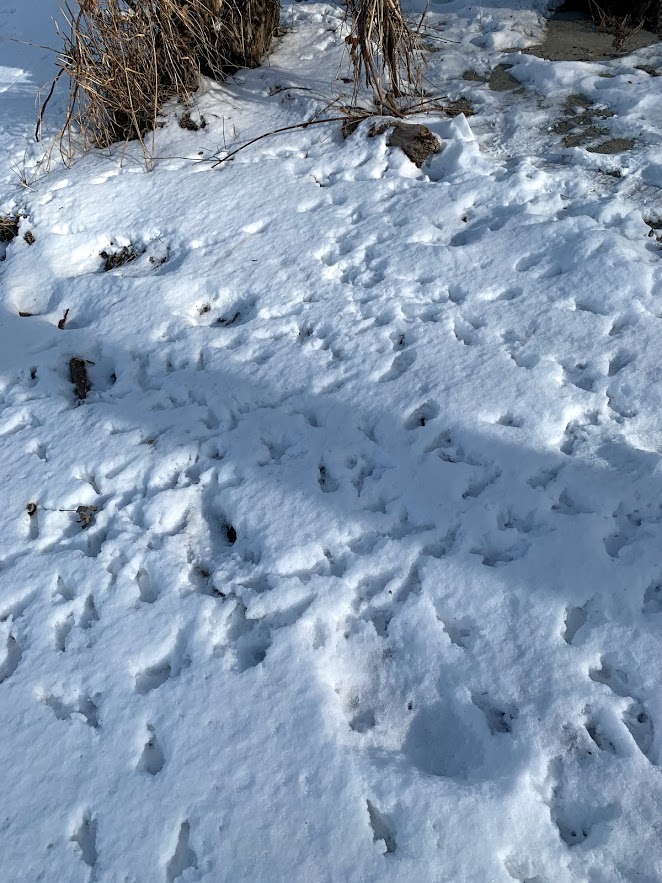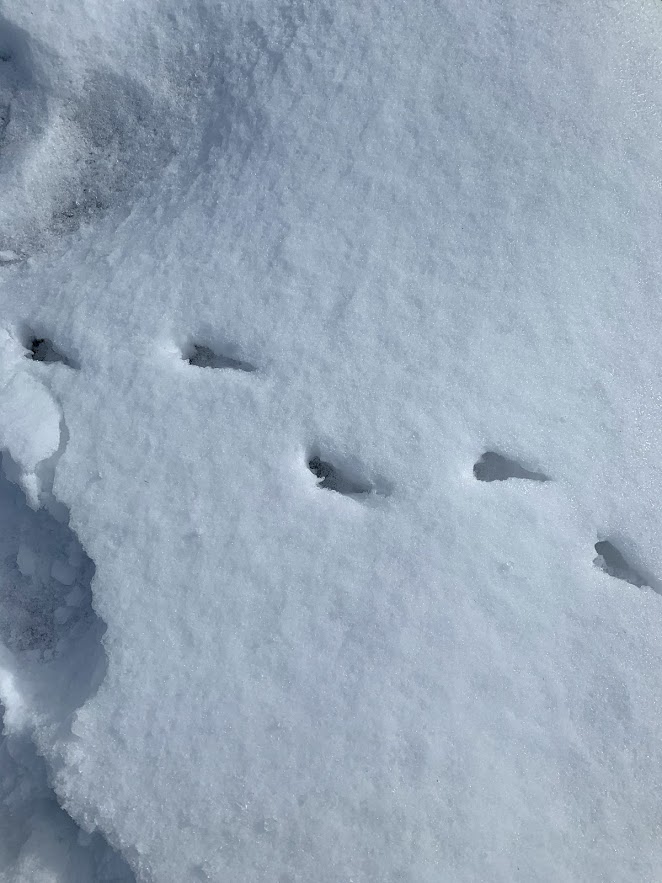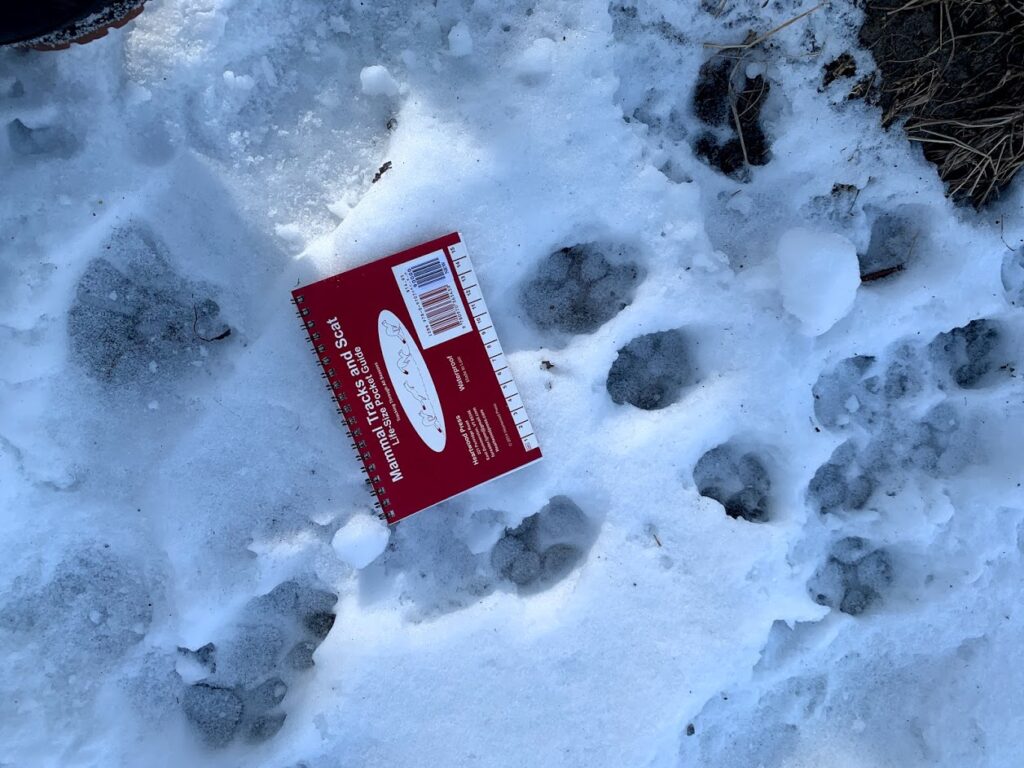
The Salmon Hole has changed dramatically since my last visit. The forest that was once buzzing in preparation for winter is now seemingly dormant. But when observed closely it is obvious that there is a lot going on in this little riverside forest.
Upon my arrival, I noticed a plethora of tracks I assumed to be squirrel tracks in the snow. The snow was very hard due to consistent melting and refreezing of old snow. Because of this, the tracks I came across were very difficult to interpret. And I came across a lot (Figures 2 and 3).


I had a very difficult time interpreting these tracks. I found them mostly in areas near the shore of the river, going from trees to the water. Because of the proximity to the water I had assumed this animal to be a muskrat. But then when I looked into my track guide I noticed that the heel is much larger than the long, slender toes. And so I was again left clueless as to what the animal may be.
I later found tracks made by a different animal that were equally difficult to interpret (Figure 4) until I found the tracks again on the south side shore of the island where some snow had melted and the sand was exposed (Figure 5).


Upon recognizing this gait pattern and measuring the size of the tracks, I assumed that the tracks belong to a River Otter. This would also make sense for the habitat as the tracks were seen going to and from the water in multiple places.
The fact that the island and main peninsula were connected by the ice would likely not have a large impact on the behavior of the otter, as this is not usually an obstacle for this species. This may have proven beneficial to other species such as squirrels, rabbits, and various other small mammals. These species were now able to easily scavenge this areas often dense vegetation. Although I believe it would be difficult for many species to live year round on this island (not many large trees to provide shelter and it would be unlikely for species to find a mate), I also believe some species would greatly benefit from the isolation.
Overall, I found that there is a lot going on at the Salmon Hole in a time where everything seems still and lifeless if you just look in the right places. The story of change that winter brings is told silently in the snow, and no longer in the sound of leaves crunching or birds chirping.